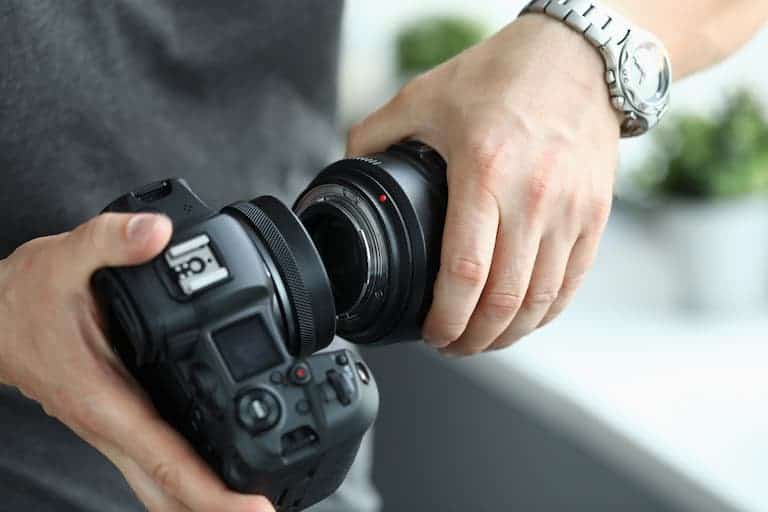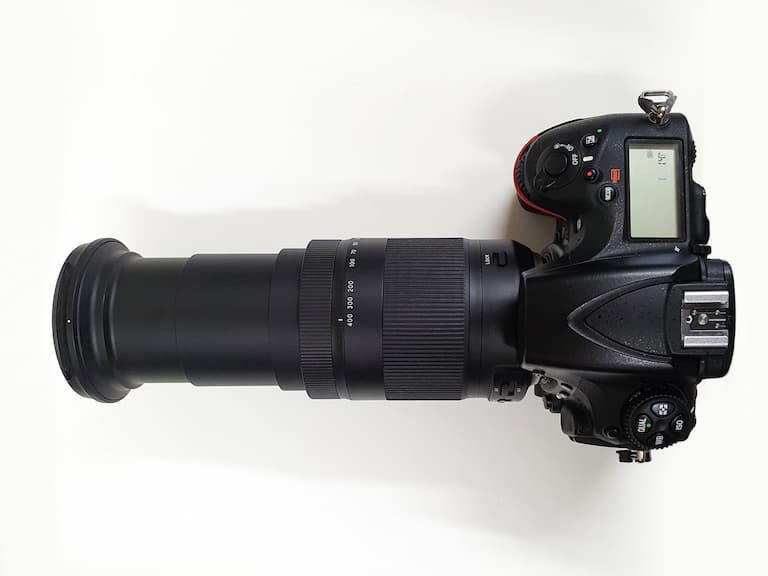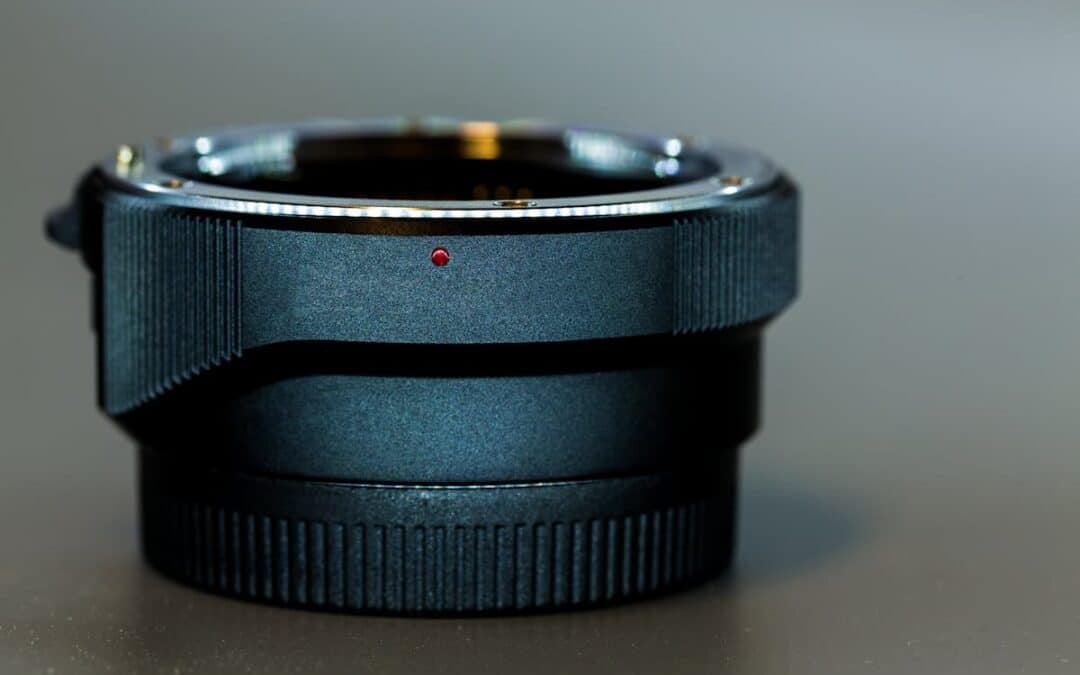A teleconverter or extender is a special lens used to magnify the object you’re trying to photograph. And doing so can help to make the subject the main focus and therefore capture more detail than you would with the standard lens. But do they work with macro ones?
Teleconverters work with macro lenses, but only if they’re compatible with them. The tool needs to be full-frame and custom-designed to work with a particular lens or different kinds of lenses. You can choose own-brand manufactured teleconverters from Nikon or third-party companies like Kenko.
The rest of this article will explain how to use a teleconverter with your macro lens, choose the best one for your macro lenses to get sharper images and why it’s worth using one.
Table of Contents
How To Use a Teleconverter With a Macro Lens
To use an extender, you need to place it between the macro lens and the camera body. There are two ways to this, and they’re as follows:
Option 1
- Attach the teleconverter to your camera.
- Attach the macro lens to the rear end of the teleconverter.
- Start shooting.
Option 2
- Mount the extender to the microlens.
- Mount the joined lenses to the camera.
- Begin taking photos.
However, photographers typically use the former option. After you have assembled the equipment, the teleconverter will increase the focal length of the primary lens while maintaining a shorter working distance.
In turn, it can then enlarge the object to fill your frame, something that will improve the quality of your photos by making them life-like and making the subject the primary focus by blurring the other less essential features surrounding it.
For this to happen, you should closely focus the camera on the subject because doing so will enhance the composition.
Choosing the Right Teleconverter
Teleconverters are similar to a magnifying lens that can increase the focal length of your regular lens and enlarge the images you capture with your camera. They come in various magnification levels:
- 1.4x
- 1.7x
- 2x
- 3x
The 1.4x and 2x magnification levels are the commonly used ones. Each make has its advantages and drawbacks, so to select the right one for your photography, here are some things to keep in mind:
Lens Compatibility
As earlier stated, your teleconverter needs to be compatible with the macro lens. Otherwise, it won’t work because teleconverters are not designed to function with all lenses, not even the generic ones.
So before you buy one, you should first check your manufacturer’s specifications list to see the teleconverters that are well-suited to work with your macro lens.

Teleconverter Type
The teleconverter type matters because the extent to which it increases the focal length can affect the image quality by reducing the lens’ maximum aperture.
For example, an 80mm f/2.8 with a 1.4x can increase the focal length to 112mm f/4, decreasing the aperture by one stop, while using the same lens with a 2x mount can multiply the focal length to 160mm f/5.6 and therefore, create a two-stop reduction.
The more the aperture decreases, the less light that your shot will capture, reducing its sharpness.
Also, if you’re using an old camera model and the maximum aperture is lowered below f/8, you’ll have to manually focus the camera on the object you want to shoot because the autofocus feature won’t work, something that can be tough in a low-light environment.
Optical Quality
By enlarging the subject in your shot, you will also be able to magnify its imperfections. And, in turn, lessen the image quality.
The type of teleconverter you choose and the standard lens you have can determine the extent to which the defects will show in your photo.
For instance, a 1.4x will only increase the size of the image by forty percent, and so if there are any aberrations, they will be less seen. At the same time, a 2x will double magnify the object and seriously expose all its shortcomings.
And if the main lens your teleconverter is attached to is a high-quality one, you will be able to take great photos minus flaws that the secondary lens would’ve magnified and vice versa.
Dedicated Teleconverters vs. Generic Third-Party Teleconverters
Apart from dedicated teleconverters being designed to work with one specific lens, they’re more expensive than generic ones because they provide quality shots as they’re manufactured to best suit the chosen lens.
While generic teleconverters are created for different lenses, their output quality may at times be compromised due to their low cost.
Own-Brand Teleconverters
Most big-name camera brands and lens manufacturers create teleconverters that work with their own lenses. The benefit of using these special lenses is that they’re optimized to work well with the macro lenses they were designed for.
Therefore, you won’t have any issues with the autofocus, exposure controls, and image stabilization.

The Verdict: A 1.4x Teleconverter Is the Best To Use With a Macro Lens
It is because it can enlarge your image without lowering its quality much. This extender can do this by reducing the maximum aperture only a little in that enough light can still pass through it, something that helps the shot maintain its sharpness.
Besides that, it won’t magnify your subject to a great level so that you will be able to notice all the defects in the picture.
To learn more about the teleconverter and its downsides before you buy one, check out this video from Leigh TheSnapChick.
Are Teleconverters Worth It?
Teleconverters are worth buying because, apart from lengthening your focal reach, they’re pretty affordable and lighter to carry than long lenses. However, you have to make sure that you select the magnification that won’t mess up the sharpness of your image and consequently affect its quality.
Conclusion
Apart from the compatibility of the lenses, the amount of light the lens will let in when the maximum aperture is reduced should be a defining factor when purchasing a teleconverter. Because with low light, the purpose behind enlarging the object to capture more details and, in turn, enrich the shot will be foiled as the pictures will be dull.
Moreover, since macro lenses are designed to take up-close shots, you don’t need a high magnifying extender to get a more eye-pleasing image.


